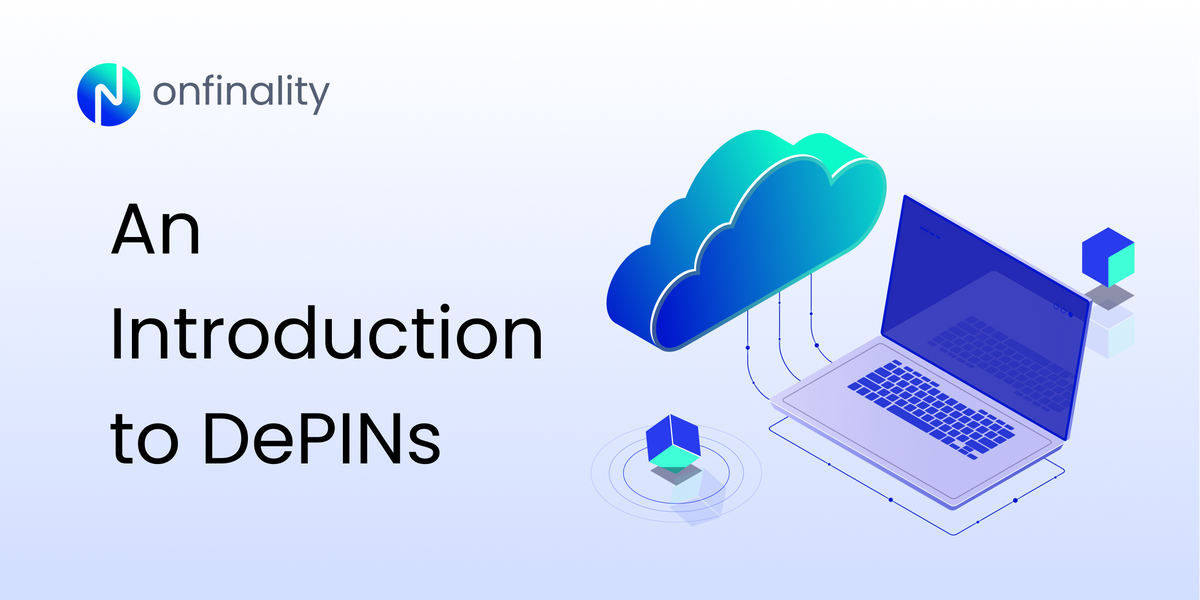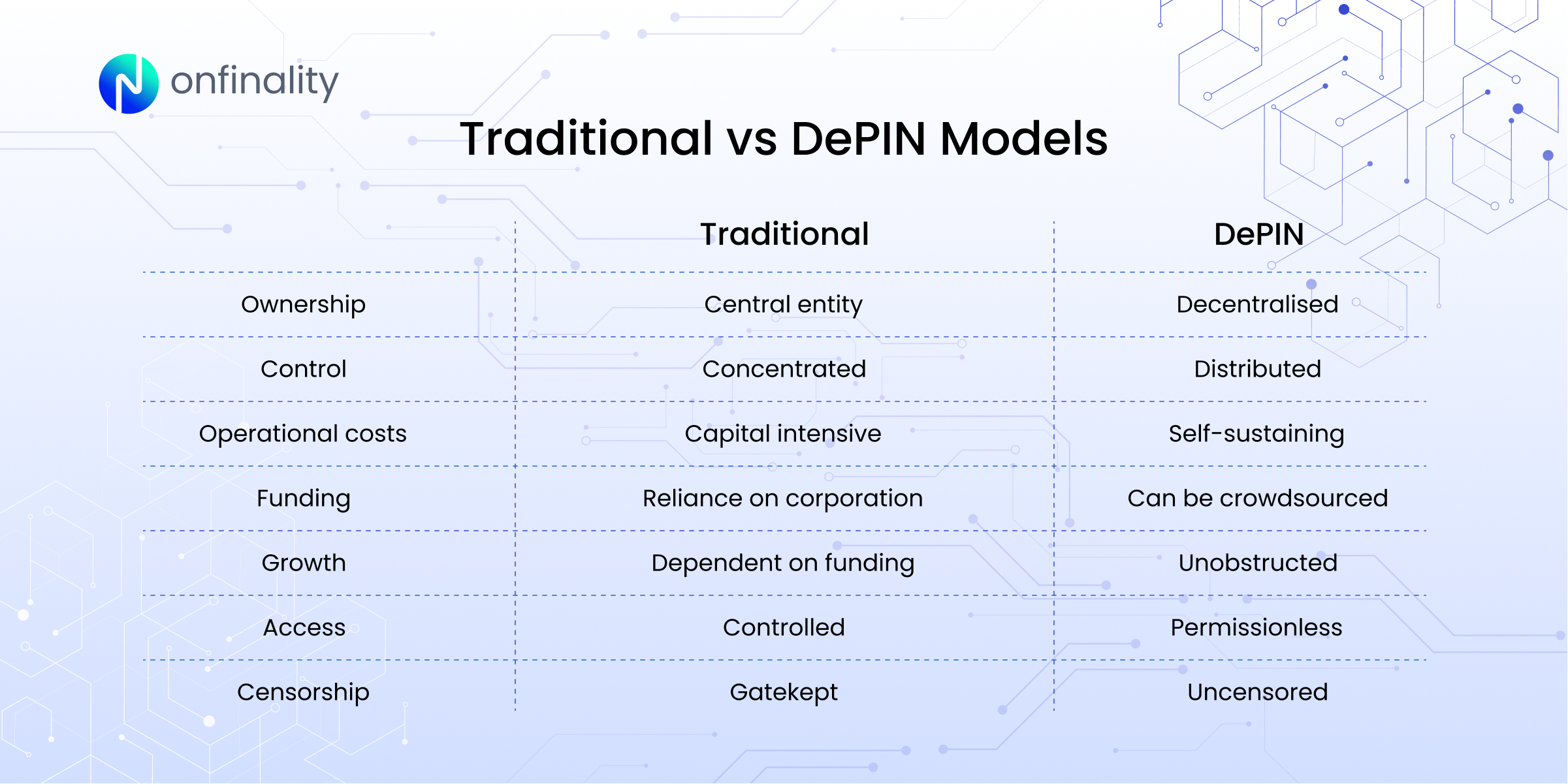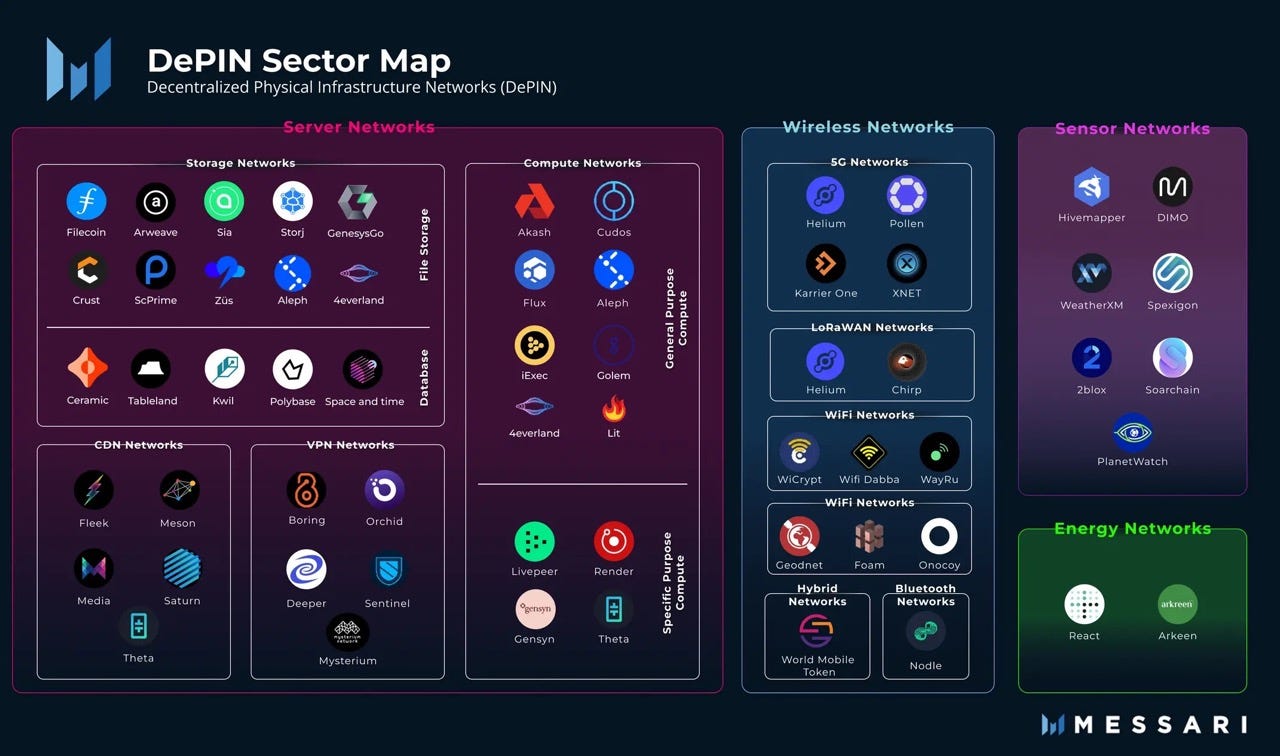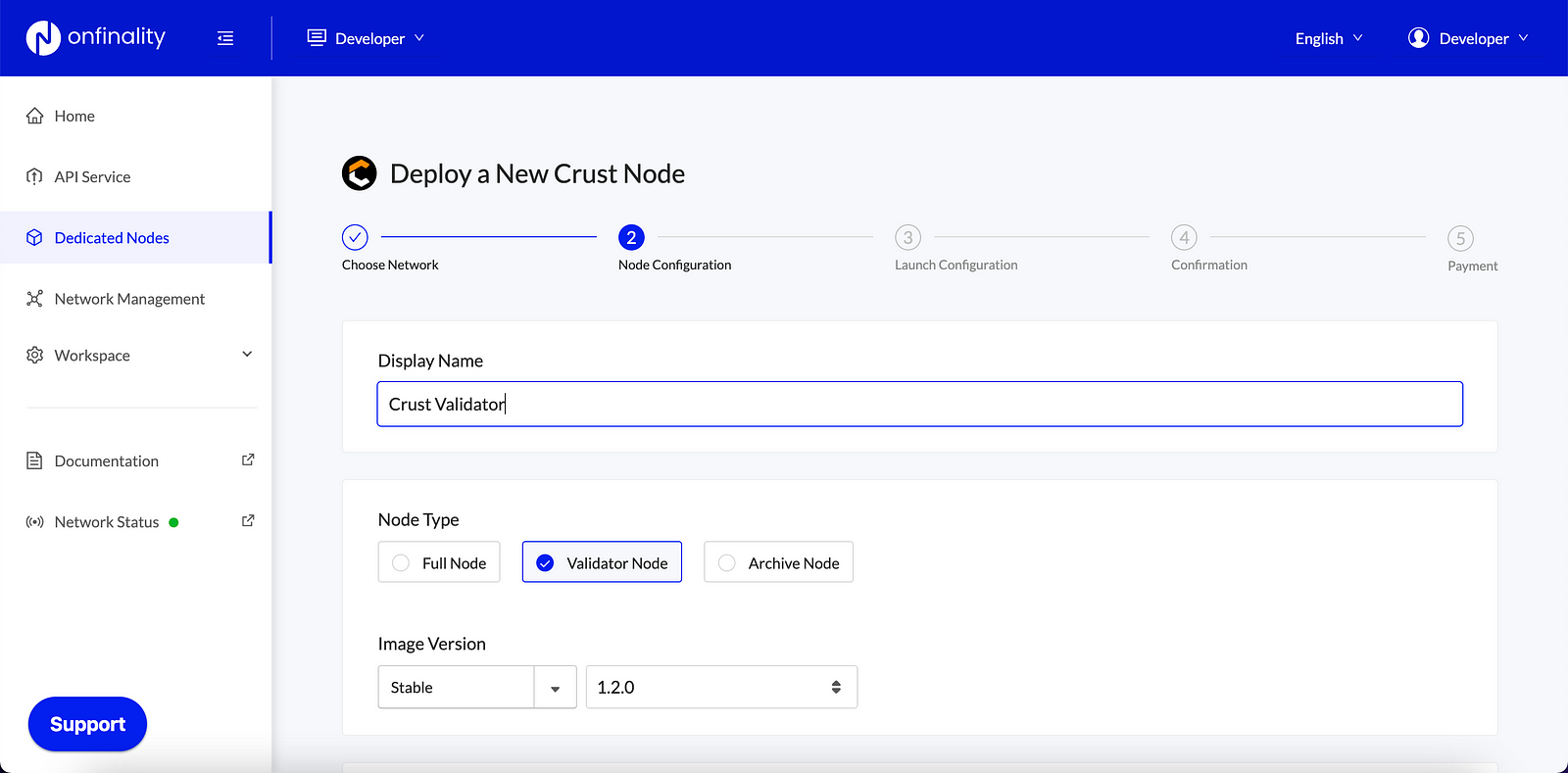An Introduction to DePINs (Decentralised Physical Infrastructure Networks)
OnFinality, a multi-chain infrastructure provider, supports DePIN projects with easy, reliable, and scalable API and nodes so they can scale for a global audience from day one!

OnFinality is a blockchain infrastructure platform that saves web3 builders time and makes their lives easier. We deliver easy-to-use, reliable and scalable API endpoints for the biggest blockchain networks and empower developers to automatically test, deploy, scale and monitor their own blockchain nodes in minutes.
In this article, we dissect one of the most crucial but overlooked sectors in web3, DePINs (Decentralised Physical Infrastructure Networks), that could transform many of the services that impact our daily lives - telecommunications, energy, IoT.
OnFinality is helping to grow the DePIN ecosystem by supporting DePIN teams like Crust Network and peaq, as well as IoT teams like Nodle & Robonomics that fuels the DePIN economy.
TLDR
- DePINs are a faster and more sustainable way of deploying and managing physical infrastructure and their accompanying services
- DePINs leverage on blockchain technology to distribute control and operations of physical infrastructure and hardware networks creating a self-sustaining cycle of growth between supply and demand
- DePINs will democratise the way infrastructural services are built and served, changing the lives of communities in undeveloped and underserved areas
What are DePINs?
DePINs (Decentralised Physical Infrastructure Networks) are a new model of building and operating real-world physical infrastructure and hardware networks (such as telecom networks, cloud services, mobility networks, and power grids) in a decentralised, trustless, and programmable manner.
They are the next step in the evolution of the Internet of Things (IoT) for the Web3 ecosystem, enabling individuals, device users, and businesses to own and monetise physical infrastructure networks without relying on a single centralised entity.
One of the key advantages of DePINs is that they incentivise participants to contribute to the network by leveraging crypto-economic protocols. These protocols offer more cost-effective and innovative services to end-users compared to traditional models, which have long been dominated by large corporations due to their capital requirements and logistical challenges.
Traditional vs DePIN Models

How do DePINs work?
DePINs is a system consisting of physical infrastructure and a digital foundation. The physical part includes solar panels connected to a network through an electronic controller, while the digital aspect operates on a blockchain network with smart contracts.
The blockchain acts as a distributed ledger, recording transactions and value transfers. Users can access broadband by renting routers from others in the network. Participants who contribute by selling solar energy or leasing their routers are rewarded with tokens.
These tokens incentivize suppliers to improve the network and compete with established players, leading to a self-sustaining cycle of growth driven by increasing demand.
Why do DePINs work?
The DePIN model aligns the incentives of all stakeholders, facilitating rapid growth on both the demand and supply sides. It offers various benefits, such as secure peer-to-peer payments without relying on intermediaries, direct access to Web3 tools and DeFi services, reduced barriers to entry, and increased competition and innovation across industries.
To safeguard end-users from market fluctuations, DePINs often incorporate a utility token pegged to a fiat currency. This utility token can be obtained by exchanging publicly-traded tokens. In simpler terms, DePINs utilise blockchain technology and tokens to stimulate the establishment and utilisation of physical infrastructure. They rely on a decentralised network and community for transactions and operational rules.
One of the notable advantages of DePINs is their ability to address underserved areas. For example, in developing regions where internet access is limited, DePINs empower communities to build their own infrastructure, making it more accessible and community-owned. This approach can have a ripple effect, leading to more DePIN projects in areas like telecommunications, energy, and IoT.
The Future of DePINs
DePINs provide entrepreneurs and founders with a new pathway into markets that would have been difficult to penetrate using traditional models. By embracing DePINs, businesses can bootstrap their networks by allowing widespread participation and leveraging digital infrastructure. This results in a community-driven network that prioritises ownership, sovereignty, and flexibility in meeting demands.

The potential of DePIN extends to various sectors, including decentralised data storage, computation, VPNs, network access, weather sensors, and distributed power grids. These sub-sectors present vast opportunities for disruption and growth within the DePIN ecosystem.
What are some examples of DePIN?
Crust Network
Crust Network is a versatile, purpose-built storage blockchain that delivers truly decentralised file storage and hosting capabilities for the entire Web3 ecosystem, empowering privacy and data ownership. Crust Network enables dApp hosting, NFT metadata storage, and encrypted file storage across a wide range of blockchains.
peaq
peaq is a Web3 network powering the Economy of Things on Polkadot. It enables people to build decentralised applications (dApps) for vehicles, robots and devices, while empowering dApp builders and dApp users to govern and earn from machines providing goods and services to people and other machines.
To learn more about DePINs and how peaq is supporting the DePIN economy, check out peaq’s comprehensive article on DePINs here.

How does OnFinality support DePIN projects?
OnFinality supports DePIN teams like Crust Network and peaq, as well as IoT teams (like Nodle and Robonomics) that drive the DePIN economy, with easy, reliable and scalable API services and a one-click node solution so that they can focus on scaling for a global audience from day 1.
OnFinality also provides step-by-step guides to help developers get started on the various ecosystems quickly and easily. For example, this guide helps Crust users Set Up A Validator on Crust in a few clicks.

Value-added features that come with our Enhanced API service, such as our comprehensive API analytics, provide valuable insights into activity, traffic, and user behaviour on endpoint usage, helping DePIN teams troubleshoot and scale strategically.
“(OnFinality) always give us the super detail data to show what data we use like for the last month and we can say like the Google analytics but in a different way you know like web3 way and we can learn more about our users and user behavior and then we can get it get it from there so this service is actually beyond the node services.”
— Luke Fan, Co-Founder of Crust Network
Looking to scale your DePIN project more efficiently?
Sign up to the OnFinality app and receive 500,000 free daily responses instantly!
Build Smarter with OnFinality. 😎

About OnFinality
OnFinality is a blockchain infrastructure platform that saves web3 builders time and makes their lives easier. OnFinality delivers scalable API endpoints for the biggest blockchain networks and empowers developers to automatically test, deploy, scale and monitor their own blockchain nodes in minutes. To date, OnFinality has served hundreds of billions of RPC requests, supports over 85 networks including Avalanche, BNB Chain, Cosmos, Polkadot, Ethereum, and Polygon, and is continuously expanding these mission-critical services so developers can build the decentralised future, faster!
